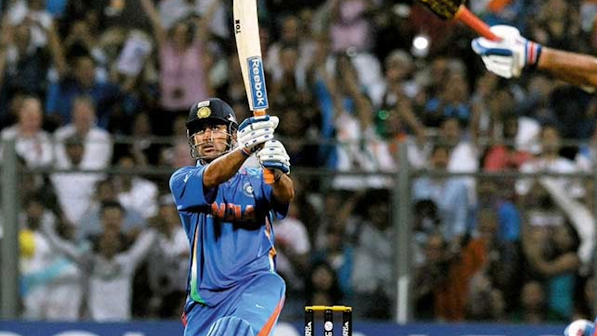Revisiting the future Mumbai's transformation
An image comparison of Wankhede and the Stadium between those
two historic nights in 2011 as the city prepares to welcome India to a World
Cup for the first time ever MIAMI: Tuesday morning, roughly 11 A.M. The sun is
starting to beat down, and the haze has just lifted. 51 hours remain before
India hosts Wankhede during the World Cup. Many people have gathered by the
Arabian Sea to watch the team van outside the team hotel, hoping to get a peek
at Rohit Sharma and company.On the morning of the championship match versus Sri
Lanka, twelve years prior, the Class of 2011 followed the same path.Marine
Drive was congested after their World Cup victory that day. The 90-minute ride
on the team bus covered the small distance between the Wankhede and the hotel.
Meet Dangarwala, who, like many others who witnessed the 2011 final in person, referred to it as a "baarat" (wedding procession). He recalls that evening as a
celebration in a city that "had come to a standstill." On Tuesday,
there were none of these moments. Their journey to the stadium took them less
than ten minutes.Many amiable spirits still linger inside Wankhede to provide
some quick recall value, even if it has been 12 years since that early April
night. To start with, a statue of Sachin Tendulkar is anticipated to be
revealed prior to the game.
An eternal mark has been made at the location where MS Dhoni's bat struck the six. Several photos from that Saturday exist, as one might anticipate.
However, it feels like a world away from 2023 when you walk around the city. There's an extreme increase in the city's pollution, to put it mildly; you can actually feel the
morning haze. Concerns have been raised by the Bombay High Court over the
city's worrisome Air Quality Index (AQI) values. Three England After they
suffered a crushing loss to South Africa, Joe Root brought it up.
"I've never participated in anything similar before," he had declared. As if you were
consuming the atmosphere. That was unusual."
The living, breathing embodiment of Mumbai's sport, the maidans, have felt the impact of
the cascading effect. In an effort to combat dust pollution, the Brihanmumbai
Municipal Corporation (BMC) announced a "water-spraying initiative"
at Shivaji Park a few days ago. BMC used up to 2.9 lakh liters of water a day
for its operations. If Azad Maidan in South Mumbai is where you can hear the
metro construction, then that's the scene at Dadar's Shivaji Park in Central
Mumbai. The construction sites that appear to have sprung up in some areas of Mumbai are the main source of the current conditions.
Even inside the Wankhede, you are unable to escape this dust. Although it was a cutting-edge
establishment in 2011, it might use some painting in 2023. There was green mold
growing in one area of the stadium as well, which did not look well during the
World Cup. Cables were strung around near the entrance (in a customary
last-minute jugaad, these protrusions had been buried before the India match).
However, that "crazy night" will always make Wankhede stand out.
Presented here is Vipul Yadav, who obtained his ticket using the lottery procedure that was
implemented for the World Cup twelve years prior. I
would have said get out of here," he added to this newspaper.
He referred to it as his greatest life experience.
The party spilled out onto the streets, so it wasn't until we were gone that we realized the
magnitude of the occasion. I wanted to be alone, so I went home since I was too
overwhelmed. I had no intention of diluting it.
A similar idea was expressed by Dangarwala. "We didn't realize what we had seen until we left
the stadium. Taking the group bus back to the lodging... That wasn't real. It's
an event that I will always remember. It's impossible to put into words. It was
a celebration. I had never seen Marine Drive get so congested, even though it
gets congested around Deepavali."

